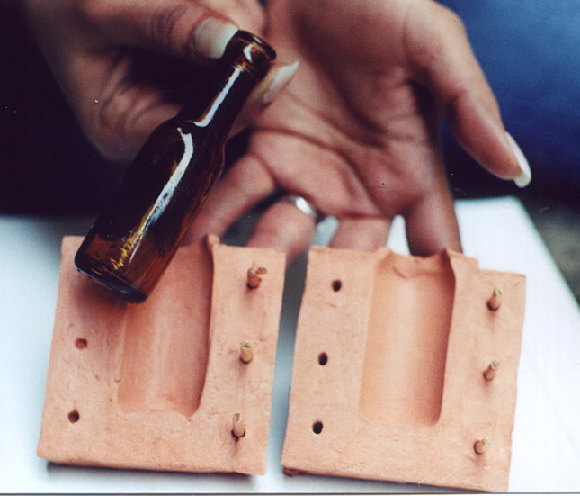BOTTLE MOLDS AND SEAM DATING:

 1840 - 1860* Seam verily goes over the shoulder |
 1860 - 1880 Seam rises onto the neck of the bottle |
 1880 - 1900 Seam completely goes up the neck |
 After 1900 Seam rises completely to the top of Bottle |